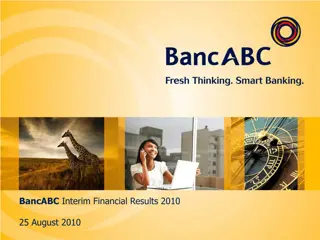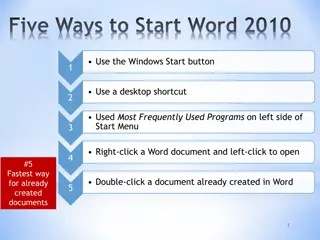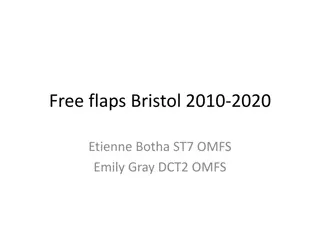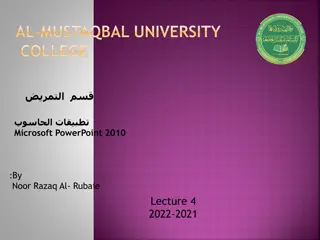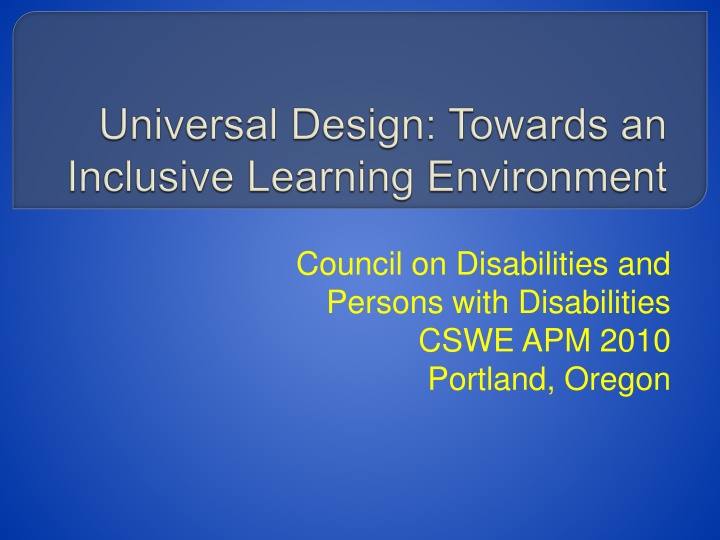
Disability Laws and Education for Inclusiveness
Explore the comprehensive landscape of disability laws, educational services, teaching strategies, and accommodations for students with disabilities. Learn about key legislation such as IDEA, Rehabilitation Act, and ADA, and gain insights into ensuring accessibility and support in educational settings.
Download Presentation

Please find below an Image/Link to download the presentation.
The content on the website is provided AS IS for your information and personal use only. It may not be sold, licensed, or shared on other websites without obtaining consent from the author. If you encounter any issues during the download, it is possible that the publisher has removed the file from their server.
You are allowed to download the files provided on this website for personal or commercial use, subject to the condition that they are used lawfully. All files are the property of their respective owners.
The content on the website is provided AS IS for your information and personal use only. It may not be sold, licensed, or shared on other websites without obtaining consent from the author.
E N D
Presentation Transcript
Council on Disabilities and Persons with Disabilities CSWE APM 2010 Portland, Oregon
Overview Disability laws and higher education Disability services Teaching Strategies for Inclusiveness Syllabus Lecture Group Discussion Collaborative Learning Instructional Technologies Sharing Experiences Summary and Implications
Disability/Education Laws IDEA /IDEIA (2004) Education Act (1973) Rehabilitation Act: Section 504 (1973) ADA (1990) Elementary/Secondary/ Postsecondary/ General Public Elementary/ Secondary Postsecondary Public schools must provide services to students with disabilities University programs must be accessible regardless of federal funds Universities that receive federal funds must be accessible Students are responsible for disclosure and requesting services Students are responsible for disclosure and requesting services School is responsible for finding students and providing services
A person has a disability if he or she: 1) has a physical or mental impairment that substantially limits one or more of the major life activities (walking, standing, seeing, speaking, hearing, breathing, taking care of oneself, learning); 2) has a record of having a disability; or 3) is regarded as having a disability.
Full-Time Freshman 1988 7.0% 1991 8.8% 1994 9.2% 1998 9.4% 2004 10.7% 2008 10.4 % National Center for Educational Statistics, 2008
Full-Time Freshman (2008) Mental illness 24.1% ADD/ADHD 19.2% Orthopedic 15.4% Specific learning 8.8% Health 5.8% Visual 2.7% Speech .7% Other 17.3%
A modification or adjustment to a course, program, service, job, facility, or activity that enables a qualified person with a disability to have an equal opportunity. Institutions are obligated to make reasonable accommodations only to known limitations of an otherwise qualified individual.
Books on tape Notetakers Testing accommodations Access to learning opportunities and materials
Tutoring Counseling Learning Strategies Help Career Counseling Access to Professionals with LD Expertise
Course substitutions Extended time limits for degree completion Modifying the manner in which courses are conducted Modifying course examinations Providing taped texts, sign language interpreters, and readers in libraries Adapting classroom and lab equipment
Those that would fundamentally alter demonstrable academic or technical standards Those that substantially alter the nature of the benefit received from the course, program or service Those that present an undue hardship
Colleges right to maintain academic and technical standards integral to its mission. Rights of students with disabilities to equal access.
Houses disability documentation, certifies eligibility for accommodations Determines reasonable accommodations Provides certain accommodations (sign language interpreters, test-proctoring, library assistance, textbook taping, etc.) Information & Referral
Student contacts disability services (DS) DS certifies a student has a disability DS determines reasonable accommodations DS gives faculty letter to students outlining accommodations Student delivers letter to faculty member Faculty member makes accommodation Faculty calls DS if they have questions
Student discloses a disability Student suspects s/he has an undiagnosed disability Based on your review of a student s work and after talking with the student, you suspect student may have an undiagnosed condition Student reports having difficulty in using or getting accommodations.
When in doubt--- ask Disability Services first!
Universal Design is the design of products and environments to be usable by all people, to the greatest extent possible, without the need for adaptation or specialized design. The Center for Universal Design, NC State University
Is based on needs of all users Has features that are incorporated into the design from the very beginning, not added on Generally benefits more than one group of users (e.g., the curb cut)
Physical curb-cut Electronic curb-cut Academic curb-cut
Americans with Disabilities Act Accommodating individuals one at a time Universal Design: Barrier-free, fewer individual accommodations needed
The basic premise of universal instructional design is that curriculum should include alternatives to make it accessible and applicable to students with different backgrounds, learning styles, abilities and disabilities. CAST (Center for Applied Special Technology)
Includes alternatives Focuses on accessibility Includes many accommodations that already exist Benefits many types of students
Welcoming Classroom Climate Focus on Essential Components of Course Flexible Means of Representation Flexible Means of Expression and Evaluation Flexible Means of Engagement
Why do universal design if accommodations are allowed? Equal access is consistent with the human rights and social justice mission of social work. Students may be embarrassed to ask for accommodations. Students may not be able to get testing to prove their disability. Easier to plan an accessible approach in advance than make accommodations later.
Ensure physical accessibility (e.g. wide doorways, accessible desks, tables) Minimize distractions (e.g. background noises, student side conversations) Announce that technology is allowed for note taking (e.g. tape recorder, laptop), but not for texting, playing games.
Create a welcoming classroom environment e.g., rules for discussion. Avoid stereotyping; use person-first language, e.g., person who uses a wheelchair Never announce a student s disability to the class. This is confidential information. Prepare students in advance for difficult activities.
Put disability accommodation statement on syllabus and discuss in class. Be organized and include weekly topics in syllabus. Schedule readings, assignments, lectures, and discussion on same topic at same time. Stick to the schedule, announce changes in advance.
Provide written materials to support and supplement what is stated orally in class. If possible: Provide notes prior to class. Provide in electronic format so students with visual or reading disabilities can enlarge or use screen reader. If using a white board, choose dark pens for lots of color contrast. Avoid using red.
Use pictures or graphs to illustrate concepts when possible. Face the class when speaking. Augment lectures with discussion and activities to help students learn through multiple means of instruction. Make available alternative representations of lectures Videotapes Post student notes
Based on Vygotskys zone of proximal development whereby: inherent social nature of learning umbrella term for a variety of approaches involving joint intellectual effort by students students and teachers. students work together to search for understanding meaning solutions or to create a product of their learning.
Undergraduate Social Policy & Social Justice course Intent to critically assess physical environment Assignment based on teams of 2-3 students
Learn about Americans with Disabilities Act (ADA) Become familiar with the standards of the ADA Use image manipulation software Propose a resolution to an identified environmental barrier
Students Took pictures of potential/existing barriers Identified and described situation Proposed methods to resolve/remove problem
All student groups successfully completed the assignment All groups collaborated and contributed their skill sets to others in their groups Students acquired underlying knowledge of ADA standards Students applied these standards to problem solving
Pros: Can provide an opportunity for diversity of perspectives and developing new appreciation for differences. Cons: Some students will monopolize the conversation while others will not actively engage in discussion. Disability Factors: Some students with disabilities face challenges participating in class and small group discussions and other interactive activities.
You already know that specific needs vary significantly among your students; First, understand the needs of individuals who experience disabilities affecting participation in classroom and group discussions; and Then, focus on developing an integrative and effective classroom discussion approach rather than multiple individual solutions to meet the learning needs of all students, not just those with particular disabilities (Scott, McGuire, & Shaw, 2003).
Reconfigure your classroom to facilitate communication Develop a class code of conduct (a.k.a. ground rules) to guide classroom discussion to promote useful, respectful and worthwhile experience for allparticipants Prepare discussion topics/questions in advance Be aware that your interactions and behaviors set the tone Keep discussions on-track Paraphrase questions and answers and highlight key points throughout discussions Create options for electronic or computer-assisted discussions Provide electronic supplementary course/discussion materials Give clear verbal and written descriptions and explanations of all visual and written materials
Physical access to the discussion location may pose a challenge for students with mobility impairments. Students who have difficulty using their hands will have difficulty taking written notes. Typical accommodations for use in discussions and group work: Include student in open discussions Allow more time to complete activities Use ramps and raised platforms for access Lower chalkboard and/or corkboard Preferential and accessible seating Note takers Audio-taped class sessions Laptop computer for note taking From: http://www.washington.edu/doit/Faculty/Strategies/Academic/Groupwork/
Challenges may include: difficulty processing, organizing, and remembering large amounts of spoken information; effective note taking due to poor writing and organizational skills; verbal communication skills. Typical accommodations include: Audio-taped class sessions Note taker Laptop computer in class for note taking Options for electronic discussion via e-mail, internet-based classrooms Ask questions in a clarifying manner, then have student describe his or her understanding of the questions Encourage questions during or after class to ensure understanding Give plenty of reinforcement From: http://www.washington.edu/doit/Faculty/Strategies/Academic/Groupwork/
Blindness - Students who are blind will not be able to see a presenter, visual aids, printed materials, or demonstrations. Typical accommodations include: Audio-taped class sessions Brailler or computer for note taking Electronic course materials which can be converted to speech output Having students state their names prior to speaking during discussions Verbal descriptions of visual aids and demonstrations Handouts in Braille or on tape
Low Vision - Students with low vision may have difficulty seeing visual aids, handouts, and demonstrations. Typical accommodations include: Note takers Audio-taped class sessions Electronic course materials which can be converted to speech output Preferential seating Large-print handouts and visual aids From: http://www.washington.edu/doit/Faculty/Strategies/Academic/Groupwork/
Verbal discussions are a challenge . Students with residual hearing or who use hearing aids may require amplification. Other students may need to lip read or use sign language interpreters. Some students with hearing impairments may also have speech impairments. Environmental conditions may impact ability to hear or read lips effectively. For example, Hearing aids may pick up extraneous background noise and interfere with the clarity of sound. Poor lighting may make it more difficult to lip read. Background lighting from a window can cast shadows on speaker's face.
Typical accommodations include: : Sign language interpreters Real-time captioning which allows immediate transcription of words to a computer screen Assistive Listening Devices (ALDs) which combined with a student's personal hearing aid can augment and amplify sound in a group setting. Microphones for these devices can then be accessed by the instructor and students Preferential seating during the discussion for optimal listening or lip reading Options for electronic discussion
Communication strategies that can facilitate access to students with hearing impairments include: When speaking, face the student directly and avoid obscuring lips or face with hands, books, etc. Repeat discussion questions and statements made by other students Write discussion key points, questions, and answers on the board or overhead Speak clearly and at a normal rate Only one person at time speaks If the student uses an interpreter, speak directly to the student, not the interpreter Clearly identify who is speaking or asking a question
Students with various health conditions may have difficulty attending class regularly; they may fatigue easily and/or have difficulty taking notes due to physical problems. Medication side effects may impact endurance, memory, and attention. Typical accommodations include: Options for electronic discussion Note takers Audio-taped class sessions Laptop computer for note taking Flexible attendance requirements From: http://www.washington.edu/doit/Faculty/Strategies/Academic/Groupwork/
Students with a mental health disorder may experience considerable anxiety and worry in contributing to classroom and group discussions. Medication side effects may impact endurance, memory, and attention. Help student feel as though he/ he has something worthwhile to contribute to the discussion. Call for responses and participation commensurate with the student's skills. As the student's comfort level rises and when a safe topic is available, encourage the student to contribute to the discussion or be a group spokesperson. With the student, devise a contingency plan in which inappropriate forms of response are replaced by appropriate ones. Gradually increase the challenges in the student's participation in group exercises while providing increased positive reinforcement. From: http://www.as.wvu.edu/~scidis/behavior.html













